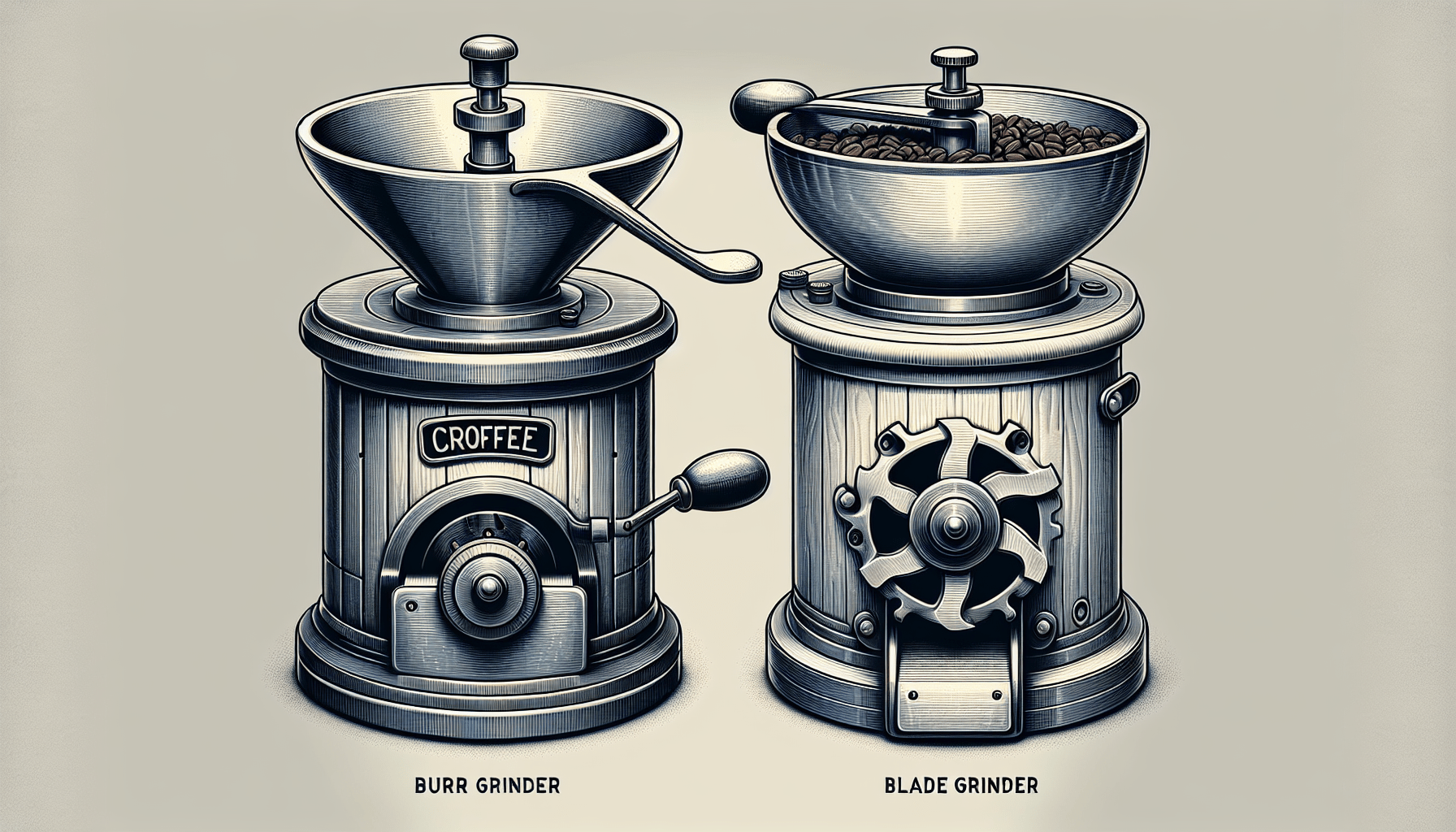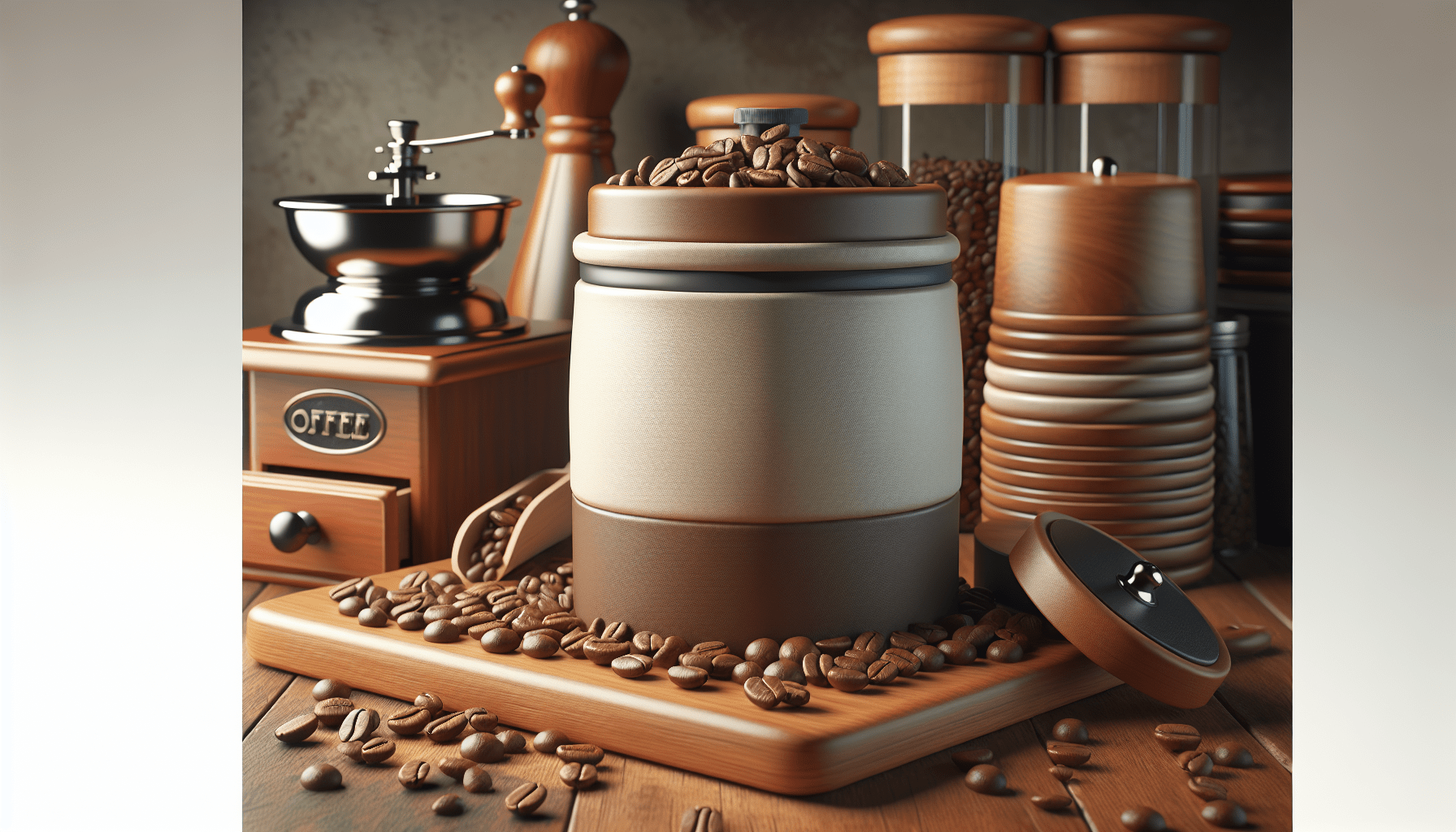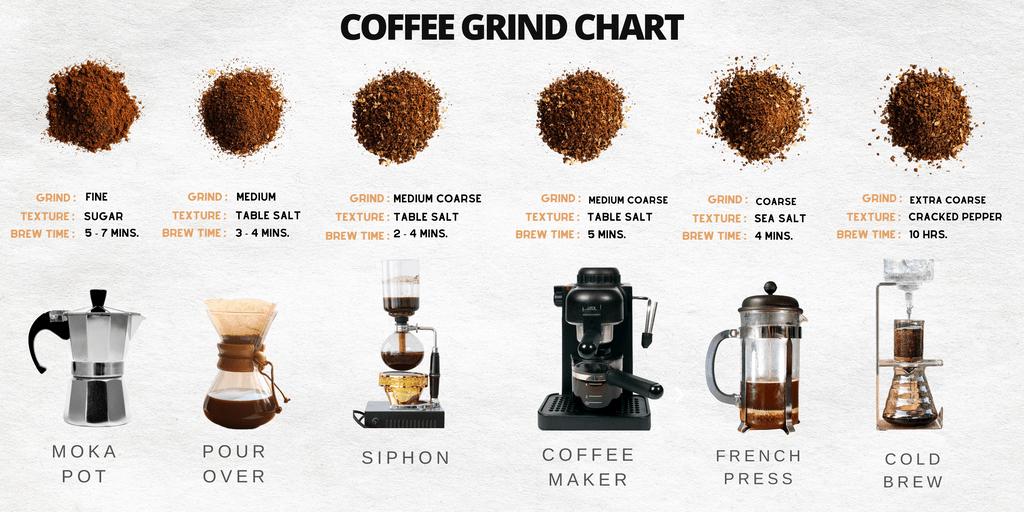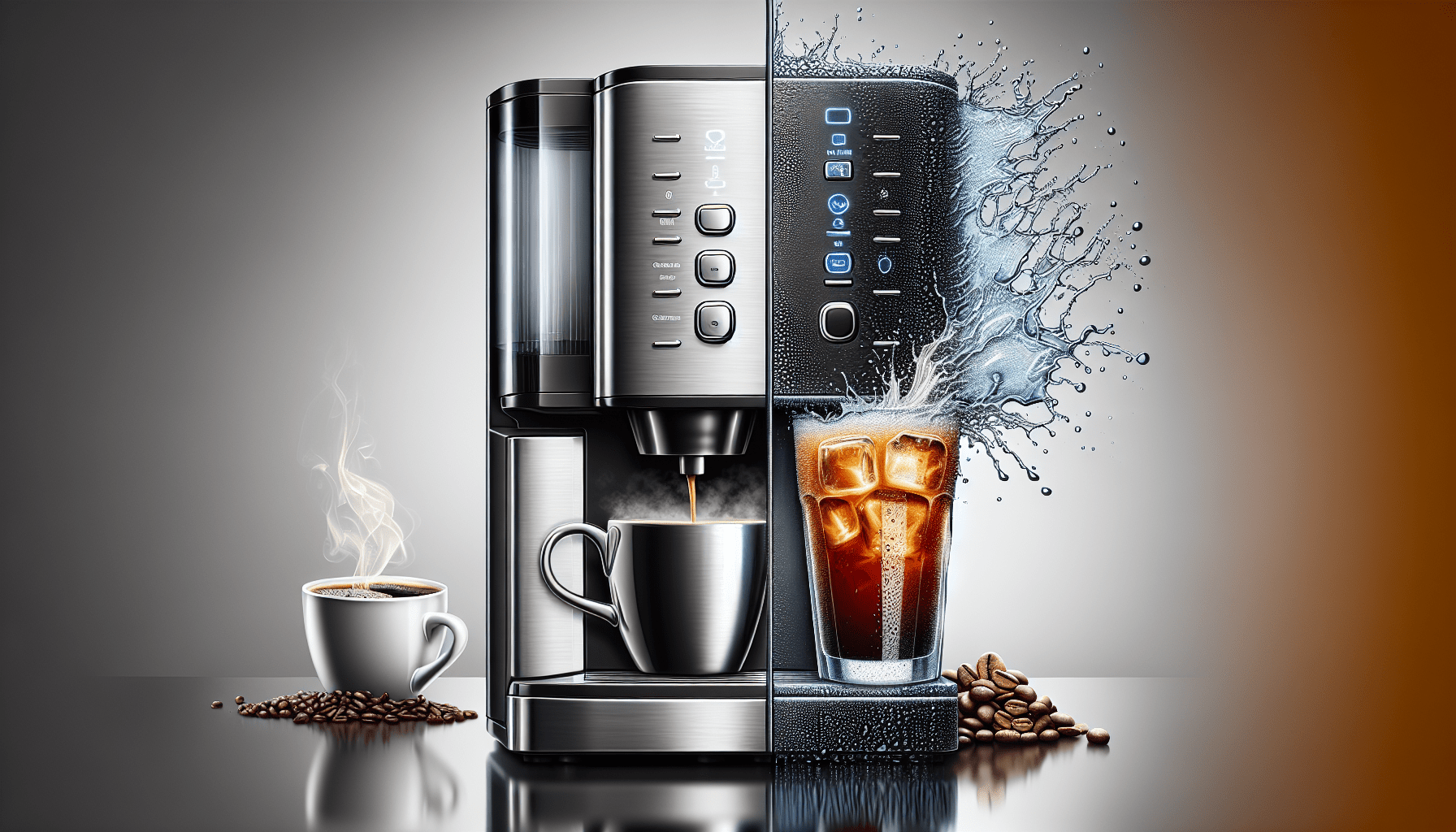Choosing the right coffee grinder can greatly impact the taste and quality of your daily brew. But with so many options available, it can be overwhelming to make a decision. That’s where this article comes in. It explores the key differences between burr grinders and blade grinders, two popular types of coffee grinders. By understanding these distinctions, you’ll be equipped to choose the perfect grinder for your coffee-loving needs. So let’s dive in and discover what sets these two grinder types apart!
Definition of Burr Grinder
A burr grinder is a type of coffee grinder that uses two burrs, or grinding wheels, to crush coffee beans into evenly-sized particles. These burrs are typically made of ceramic or stainless steel and are finely engineered to grind the beans with precision.
How does a burr grinder work?
In a burr grinder, the coffee beans are fed into a hopper at the top of the machine. From there, they pass between two burrs, which are set at a specific distance apart. As the beans are ground, they are crushed and broken down into consistent, uniform particles. The ground coffee then falls into a collection container, ready to be brewed.
Types of burr grinders
There are two main types of burr grinders: conical burr grinders and flat burr grinders.
Conical burr grinders have cone-shaped burrs that rotate against each other to grind the coffee beans. This design allows for a slower, more controlled grind, resulting in a more consistent particle size.
Flat burr grinders, on the other hand, have flat, parallel burrs that grind the beans between them. This type of grinder is typically faster and can produce a larger quantity of coffee grounds in a shorter amount of time.
Advantages of using a burr grinder
One of the key advantages of using a burr grinder is its ability to produce a uniform grind size. This is important for achieving optimal flavor extraction during the brewing process. With a consistent grind, the coffee grounds can be evenly saturated, resulting in a more flavorful and balanced cup of coffee.
Another advantage of burr grinders is their adjustability. Most models allow you to adjust the distance between the burrs, allowing for greater control over the grind size. This is especially useful if you enjoy brewing coffee using different methods, as each method requires a specific grind size.
Lastly, burr grinders tend to generate less heat during the grinding process compared to blade grinders. Heat can negatively affect the flavor of the coffee, so minimizing heat generation is crucial for preserving the coffee’s delicate flavors.
Definition of Blade Grinder
A blade grinder, also known as a propeller grinder, is a type of coffee grinder that uses a spinning blade to chop the coffee beans into smaller pieces. The blade typically resembles a propeller and is located at the center of the grinder.
How does a blade grinder work?
In a blade grinder, the coffee beans are poured into a grinding chamber. When the grinder is turned on, the blade rapidly spins, chopping the beans into smaller and smaller pieces. The longer the grinder is left running, the finer the grind size will be.
Advantages and disadvantages of using a blade grinder
One advantage of using a blade grinder is its affordability. Blade grinders are generally less expensive than burr grinders, making them a popular choice for those on a budget.
However, blade grinders have their drawbacks. One major disadvantage is their lack of consistency. Since the blade chops the beans randomly, the resulting grind can be inconsistent, with a mix of fine and coarse particles. This inconsistency can lead to an uneven extraction and ultimately affect the flavor of the coffee.
Moreover, blade grinders tend to generate more heat during the grinding process due to the friction caused by the spinning blade. This heat can potentially burn the coffee, resulting in a bitter taste.
Grinding Mechanism
Burr grinder’s grinding mechanism
As mentioned earlier, burr grinders use two burrs to crush and grind the coffee beans. The burrs are precisely engineered to provide a consistent grind size, resulting in a more even extraction.
The grinding mechanism of a burr grinder ensures that the coffee beans are ground at the same rate, producing evenly-sized particles. This consistency plays a crucial role in extracting the full flavor potential of the coffee.
Blade grinder’s grinding mechanism
In contrast, blade grinders rely on a spinning blade to chop the coffee beans. This method is much less precise compared to the grinding mechanism of a burr grinder.
The spinning blade of a blade grinder can lead to an inconsistent grind, with some beans being pulverized into powder while others remain partially intact. This variation in grind size can lead to an uneven extraction during brewing, resulting in a less satisfying cup of coffee.
Consistency of Grind
Burr grinder’s consistency of grind
One of the significant advantages of a burr grinder is its ability to produce a consistent grind size. The precise engineering of the burrs ensures that the coffee beans are ground at a uniform rate, resulting in particles of similar sizes.
This consistency is crucial for brewing methods that require a specific grind size, such as espresso or pour-over. With a consistent grind, the coffee grounds can be evenly saturated, allowing for optimal extraction and a well-balanced cup of coffee.
Blade grinder’s consistency of grind
On the other hand, blade grinders struggle to produce a consistent grind size due to their grinding mechanism. As the spinning blade chops the beans, it creates a mixture of fine and coarse particles.
This inconsistency can lead to over-extraction of the finer particles and under-extraction of the coarser ones during the brewing process. The resulting cup of coffee may lack balance and have a muddled flavor profile.
Size of Grounds
Burr grinder’s size of grounds
Burr grinders offer a wide range of grind sizes, making them suitable for various brewing methods. Whether you prefer a coarse grind for French press or a fine grind for espresso, a burr grinder can accommodate your preferred size.
The adjustable nature of most burr grinders allows you to dial in your desired grind size with precision. This versatility is particularly useful if you enjoy experimenting with different brewing methods or if you have multiple coffee brewing devices.
Blade grinder’s size of grounds
Blade grinders, unfortunately, lack the same level of control over grind size as burr grinders. The resulting grind tends to be inconsistent, with a mixture of fine and coarse particles.
Since blade grinders don’t offer a precise adjustment mechanism, it can be challenging to achieve the desired grind size consistently. This limitation may restrict the brewing methods that can be effectively utilized with grounds from a blade grinder.
Adjustability
Burr grinder’s adjustability
Burr grinders are highly adjustable, allowing you to fine-tune the grind size to suit your specific brewing needs. With a simple adjustment mechanism, you can easily switch between grind sizes, catering to different brewing methods or your personal preference.
This adjustability is particularly beneficial if you enjoy experimenting with different coffee flavors. By adjusting the grind size, you can enhance the extraction process and uncover new tastes and aromas in your cup of coffee.
Blade grinder’s adjustability
Unlike burr grinders, blade grinders typically lack an adjustable setting for grind size. The grinding mechanism of a blade grinder does not allow for precise control over the grind size, making it difficult to consistently achieve the desired result.
The fixed grind size of a blade grinder may limit the brewing methods that can be effectively utilized. If you prefer a specific grind size for your preferred brewing method, a blade grinder might not offer the necessary adaptability.
Heat Generation
Burr grinder’s heat generation
Burr grinders excel in minimizing heat generation during the grinding process, thanks to their slow and controlled grinding mechanism. The relatively low RPM (rotations per minute) of the burrs ensures that minimal heat is produced, preserving the delicate flavors of the coffee.
Since excessive heat can result in a loss of aroma and flavor, the ability of a burr grinder to generate less heat is highly beneficial. It allows the coffee beans to retain their natural flavors, resulting in a more enjoyable and nuanced cup of coffee.
Blade grinder’s heat generation
In contrast, blade grinders can generate more heat due to the high-speed rotation of the blade. The friction between the blade and the coffee beans produces heat, which can potentially scorch the grounds and adversely affect the taste of the coffee.
The heat generated by a blade grinder can result in a bitter and burnt flavor in the brewed coffee. This is especially noticeable when using a blade grinder for grinding large quantities of coffee or leaving the grinder running for an extended period.
Price Range
Burr grinder’s price range
Burr grinders generally have a higher price range compared to blade grinders. This is due to the more complex and precise engineering required to produce a quality burr grinder.
Depending on the brand, model, and features, burr grinders can vary in price. Entry-level burr grinders can start around $50, while high-end models with additional features can cost several hundred dollars.
While the initial investment for a burr grinder might be higher, the quality and consistency of the grind, as well as the overall performance, can justify the price for coffee enthusiasts who prioritize the flavor and brewing experience.
Blade grinder’s price range
Blade grinders are generally more affordable compared to burr grinders. They are often favored by budget-conscious individuals who prioritize simplicity and cost-effectiveness.
The price of a blade grinder can vary depending on the brand and available features. Entry-level blade grinders can be found for as little as $15, while more advanced models with additional functionalities might cost around $30 to $50.
If budget plays a significant role in your decision-making process or if you are new to coffee brewing and want a simple and affordable option, a blade grinder might be a suitable choice.
Noise Level
Burr grinder’s noise level
Burr grinders are known for their relatively quiet operation compared to blade grinders. The slow and steady grinding process of the burrs produces less noise, making them a popular choice for those who prefer a more peaceful coffee grinding experience.
While there is still some noise involved in the grinding process, particularly with higher-end burr grinders, it is generally less disruptive and more tolerable compared to the high-pitched noise of a blade grinder.
Blade grinder’s noise level
Blade grinders tend to produce a louder noise during operation. The high-speed spinning of the blade creates a distinct whirring sound that can be quite loud, especially with lower-quality models.
If noise is a concern for you, especially if you live in close quarters with others or prefer a quieter morning routine, a blade grinder might not be the most suitable option. The noise produced by blade grinders can be disruptive and potentially disturb the tranquility of your surroundings.
Conclusion
When it comes to choosing between a burr grinder and a blade grinder, several factors come into play.
If you value consistency, control, and flavor, a burr grinder is the way to go. With its ability to produce a uniform grind size, adjustability, and minimal heat generation, a burr grinder offers the best results for coffee enthusiasts who appreciate the nuances of a well-brewed cup of coffee.
On the other hand, if affordability and simplicity are your main concerns, a blade grinder can still get the job done. Despite its limitations in terms of consistency and heat generation, a blade grinder can provide a quick and cost-effective solution for those who are less particular about the subtleties of their coffee.
Ultimately, the choice between a burr grinder and a blade grinder boils down to your personal preferences, budget, and desired brewing method. Whichever type of grinder you choose, remember to invest in high-quality coffee beans and experiment with different brewing techniques to create a truly enjoyable coffee experience.




